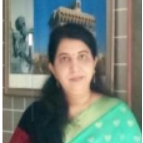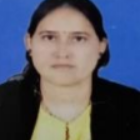International Journal of Modern Education and Computer Science (IJMECS)
IJMECS Vol. 15, No. 4, 8 Aug. 2023
Cover page and Table of Contents: PDF (size: 429KB)
Scientific Approach of Prediction for Professions Using Machine Learning Classification Techniques
Full Text (PDF, 429KB), PP.30-42
Views: 0 Downloads: 0
Author(s)
Index Terms
Machine learning, naïve Bayes, logistic -R, J48, horoscope, Astrology, Weka
Abstract
Astrology is a very ancient and traditional method of prediction that increases the interest of people continuously. The globe today, there are no common guidelines or principles for astrological prediction. Rather than setting universal principles and criteria for astrological prediction, astrologers focus on providing high-quality services to individuals but there is no guarantee of accuracy. Machine learning is providing the best result for analysis and prediction on many applications by the learning of computers. Prediction and classification make it possible for any learner to work on large, noisy, and complex datasets. The main motive of the paper is to introduce a scientific approach that reduces the drawback of the traditional approach and indicates the universal rules of prediction and proves the validity of astrology by the three classification techniques, Naïve Bayes, Logistic-R, and J48. It is a part of supervision learning that operates with cross-validation 10,12, and 14fold for calculating the terms 1) correctly classified instances (CCI), erroneously categorized instances (ECI), Mean absolute error (MAE), Root mean squared error (RMSE), and Relative absolute error (RAE). 2) True Positive Rate, False Positive Rate, Precision, and F-Measure values. 3) The MCC, ROC, and PRC area values. 4) To calculate the average weight of the three-class label professor, businessman, and doctor in terms of true positive rate, false-positive rate, precision, F-measure, PRC, and ROC area, 5) finally, we calculated the accuracy of each classification technique and compare which provide the better result. For this, we have collected the date of birth, place of birth, and time of birth of 100 persons who belong to different professions. 40 data of professors, 30 data of businessmen, and 30 data of doctors, prepare the horoscope of an individual with the help of software. For analysis, we create the datasheet in .csv format and apply this data sheet in the weka tool to check various parameters and the accuracy percentage of each classifier.
Cite This Paper
Snehlata Barde, Sangeeta Tiwari, Brijesh Patel, "Scientific Approach of Prediction for Professions Using Machine Learning Classification Techniques", International Journal of Modern Education and Computer Science(IJMECS), Vol.15, No.4, pp. 30-42, 2023. DOI:10.5815/ijmecs.2023.04.03
Reference
[1]S. Barde, A.S. Zadgaonkar, (2014, Feb.). G.R. Sinha, “Multimodal biometrics using face, ear and iris modalities,” International Journal of Computer Applications, NCRAIT no. 2, pp.9-15,
[2]O. P. Rishi and N. Chaplot, (2010, Dec.). "Archetype of astrological prediction system about profession of any persons' using case based reasoning," 2010 International Conference on Communication and Computational Intelligence (INCOCCI), pp. 373-377.
[3]S. Tiwari and S. Barde,( 2021, Aug.). "Machine Learning Make Possible to Astrological Prediction for Government Job Using Classification Techniques," 2021 Asian Conference on Innovation in Technology (ASIANCON), pp. 1-4, doi: 10.1109/ASIANCON51346.2021.9544586.
[4]S.B. Kotsiantis, I.D. Zaharakis, & P.E. Pintelas, “Machine learning: a review of classification and combining techniques,” Artif Intell Rev., vol. 26, pp.159–190, 2006.
[5]R.P. Bhandary, P.S. Sharma, & H. Tharoor, “Prediction of Mental Illness Using Indian Astrology: Cross-Sectional Findings from a Prospective Study,” Journal of Scientific Exploration., vol.32, no.3, pp. 555-578, Jan 2018.
[6]N. Chaplot, P. Dhyani and O. P. Rishi, (2015, May). "Astrological prediction for profession using classification techniques of artificial intelligence," International Conference on Computing,Communication & Automation, 2015, pp. 233-236,
[7]O. P. Rishi and N. Chaplot, (2010, Dec.)."Predictive role of case based reasoning for astrological predictions about profession: System modeling approach," 2010 International Conference on Communication and Computational Intelligence (INCOCCI), pp. 313-317.
[8]R.P. Bhandary, P.S.Sharma, & H. Tharoor, “Prediction of Mental Illness Using Indian Astrology: Cross-Sectional Findings from a Prospective Study,” Journal of Scientific Exploration, vol.32.no.3, pp, 555-578, Sep.2018.
[9]N.R. Rajopadhye, A. Rajopadhye, M. Rajopadhye, & P. Kulkarni, “Empirical testing of few fundamental principles of Vedic astrology through comparative analysis of astrological charts of cancer diseased persons versus persons who never had it,” International journal of applied research, vol.7, pp.74-85, May 2021.
[10]A. Ahmad, S. Garhwal, S.K. Ray, “The Number of Confirmed Cases of Covid-19 by using Machine Learning: Methods and Challenges,” Arch Computat Methods eng, vol. 28, pp. 2645–2653, Jun 2021.
[11]F. Olaiya, & A.B. Adeyemo, “Application of Data Mining Techniques in Weather Prediction and Climate Change Studies,” International Journal of Information Engineering and Electronic Business, vol.4, pp.51-59.Feb 2012.
[12]A. Cappozzo, F. Greselin, & T.B. Murphy, “A robust approach to model-based classification based on trimming and constraints,” Adv Data Anal Classif, vol. 14, pp.327–354, Jun 2020.
[13]DO. Oyewola, EG. Dada, S. Misra, R. Damaševičius, “Predicting COVID-19 Cases in South Korea with All K-Edited Nearest Neighbors Noise Filter and Machine Learning Techniques,” Information. vol.12, no.12, pp.528-536, Dec 2021.
[14]S.B. Kotsiantis, I.D. Zaharakis, & P.E. Pintelas, “Machine learning: a review of classification and combining techniques,” Artif Intell Rev, vol. 26, pp.159–190, Nov 2006.
[15]W. Loh, Classification and regression trees. Wiley Interdisciplinary Reviews: Data Mining and Knowledge Discovery, vol.1, no.1, pp.14-23, Jan 2011.
[16]JA. Cruz, DS. Wishart, “Applications of machine learning in cancer prediction and prognosis,” Cancer Inform, vol.11, no. 2, pp.59-77, Feb 2007.
[17]R. Kohavi, and D. Sommerfield, (1998). “Targeting Business Users with Decision Table Classifiers,” KDD-98 Proceedings.
[18]O. P. Rishi and N. Chaplot, (2010, Dec.). "Predictive role of case-based reasoning for astrological predictions about the profession: A system modeling approach," 2010 International Conference on Communication and Computational Intelligence (INCOCCI), pp. 313-317.
[19]J.S. Sánchez, R.A. Mollineda, & J.M. Sotoca, “An analysis of how training data complexity affects the nearest neighbor classifiers,” Pattern Anal Applic, vol. 10, pp.189–201, Feb. 2007.
[20]X. Li, Zhang, C., Dong, L., “Rough Sets and Confidence Attribute Bagging for Chinese Architectural Document Categorization,” Journal of Software, vol. 6, no. 4, pp.628-635, Apr 2011.
[21]R.P. Bhandary, P.S. Sharma, & H. Tharoor, “Prediction of Mental Illness Using Indian Astrology: Cross-Sectional Findings from a Prospective Study,” Journal of Scientific Exploration, vol. 32, no.3, pp.555-578, Sep. 2018.
[22]P. Bhattacharjee, Scientific astrological prediction of human life. International Journal of Jyotish Research, vol.5, no.1, pp.12-16, Aug. 2020.
[23]M. Singla, D.Ghosh and K.K.Shukla, A survey of robust optimization-based machine learning with special reference to support vector machines. Int. J. Mach. Learn. & Cyber, vol.11, pp.1359–1385, July 2020.
[24]D. Faccini, F. Maggioni, & F.A. Potra, “Robust and Distributionally Robust Optimization Models for Linear Support Vector Machine,” pre-print submitted to Elsevier, vol.5, no.1, pp. 1-40, Jun 2021.
[25]J. Liu, C. Zhong, M. Seltzer, & C. Rudin,(2022, Feb). “Fast Sparse Classification for Generalized Linear and Additive Models,” Proceedings of The 25th International Conference on Artificial Intelligence and Statistics in Proceedings of Machine Learning Research, vol.151, pp. 9304-9333.
[26]R.C. Prati, J. Luengo, & F. Herrera, “Emerging topics and challenges of learning from noisy data in nonstandard classification: a survey beyond binary class noise,” Knowl Inf Syst, vol.60, pp. 63–97, July 2019.
[27]H.Zhang, J. Su,(2004). “Naive Bayesian Classifiers for Ranking. In: Boulicaut, (eds) Machine Learning: ECML, Lecture Notes in Computer Science, Springer, Berlin, Heidelberg, vol. 3201, 2004.
[28]M.R. Keyvanpour, & F. Baesi, (2015, Feb). “IG-NB: A Hybrid Method for Data Classification,” International Conference Data Mining, Civil and Mechanical Engineering (ICDMCME’2015), Bali (Indonesia), pp.263-291.
[29]M.A. Hall, & E. Frank, (2008). “Combining Naive Bayes and Decision Tables,” Proceedings of the Twenty-First International FLAIRS Conference.pp.318-319.
[30]M.A. Hall, E. Frank, G. Holmes, B. Pfahringer, P. Reutemann, & I.H. Witten, “The WEKA data mining software: an update,” ACM SIGKDD Exploration Newsletter, vol. 11, no.1, pp. 10-18, Jun. 2009.


